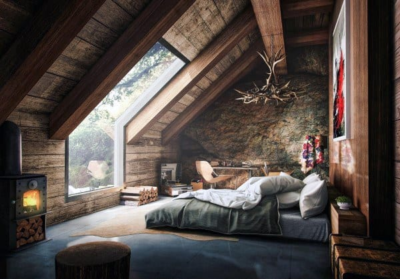Last Updated on July 14, 2024 by Team Experts
Decorating your bedroom & house is a highly personal art form. Therefore, there are several design principles that you should follow to ensure a successful outcome. Following are some dos and don’ts that will get you started, whether you’re furnishing a newly remodeled area or simply refreshing an old one.
Don’t Go Too Deep in Following a Theme
We all have a favorite design in mind to create for our room. However, while making that style, we frequently try to follow the theme too much. However, giving your room an excessive piece might be the typical error.
You could wind up with a try-hard appearance that is out of place and often out of context. Rather than being overly exact, seek colors, artwork, or furniture from the style you prefer and combine them with other pieces in your design. You’ll still get the style and feel you want without turning it into a theme park.
Avoid Making Clutter
We all have items that we want to exhibit, whether souvenirs from our trips or mementos from our past. When you combine these items with presents or your most recent shopping binge, you may easily wind up with a lot of clutter that takes up a lot of room. It not only looks cluttered, but it also makes tiny places seem even smaller.
The key is to modify your collectibles and keep the number of objects on display to a minimum. If you have a lot of sentimental things that you can’t bear to part with, consider putting some aside and rotating them over time, much like a gallery does with the artwork.
Don’t Go for Matching Furniture
When purchasing furniture for your living room, dining room, or finding bedroom accessories online, it’s easy to make the mistake of buying a whole matching set from one store. Sure, they’re all the same color and style, but it’s boring and lacks personality. Moreover, you don’t want your house to resemble a catalog display window.
The key is to start with a bed or a substantial three-seater couch that you like, then add to the appearance with complementing bedside tables or statement armchairs in a patterned fabric. It will result in a unique appearance that is uniquely yours.
Consider Hiring an Architecture
Make sure your decorating style complements your home’s architecture. Don’t try to fit a polished, modern design into an opulent Federation mansion. You’ll have to work with its history to some extent.
The same may be said for your current location. Even if you adore the design of seaside houses, your arid area won’t allow you to build one. Accept your surroundings and utilize them to inspire your design style.
Don’t Go for One color
Don’t design only with one color to represent a theme. For example, going all blue and yellow won’t make your home appear like a beach getaway.
It might be part of the difficulty if you’re having problems identifying your color palette. Your color palette is probably already hiding in your space or house.
Begin by examining the colors in your clothing and accessories, as well as your favorite pieces of furniture, books, photographs, and perhaps something you’ve had since infancy. It may be a toy, a postcard, or a portion of the fabric. Anything that catches your attention, makes you smile, and inspires you to start might be your color.
Create a Mood Board
Make mood boards and floor plans for each room, not the entire house. Although you can still see how all the rooms function together, each area requires time and effort to fit into the broader concept.
Avoid Placing the Furniture Against Walls
Don’t put all your furniture against the walls unless you live in a tiny house or apartment. Bring in pieces, allow the walls some breathing room, and use the entire area. It improves flow and allows for a more fluid layout, particularly significant in open-plan houses.
Place Your Old and New Furniture Together
Add something somewhat old to the area, such as a vintage clock, antique candlesticks, or a weathered timber shelf, even if you favor the appearance of all-new furniture. It prevents the space from becoming too uniform.
Don’t Try to Match Everything
While you want your house to have a coherent design, don’t pick too many identical items. There shouldn’t be any uniformity in height, shape, color, or pattern. Break up all the square pillows around one, and mix and match vases of various sizes, forms, and materials. It’s essential to have some variation.
Take Your Time in Deciding
There’s no need to rush and do all the decorating simultaneously. The best areas are those that you create after thinking properly.
Buy Neutral Paints for Your Walls
Keep hues like beige or grey to a minimum, especially on the first level, where movement is essential. Neutral walls allow you to change your accessories, giving you the most design versatility.
If you have two tiny rooms next to each other, painting them the same neutral hue makes them feel more spacious.
Buy Mirrors for Every Room
Mirrors may make a space feel brighter by bouncing light around the area. Putting one in the wrong location, on the other hand, is almost as bad as not having one at all.
Instead of right across from windows, mirrors should be hung perpendicular. A perfectly aligned mirror over a window may reflect light into the room.
Plan Everything According to the Budget
If you spend too much on an expensive chair, you’ll have less money for the rest of the house. You want to make sure that your financial decisions are well-informed.
A budget helps you divide the costs of various products among rooms. If you find a one-of-a-kind dining table, you can still make an exception, but you’ll have to think about other ways to save money to pay for it.
Read more: 4 Secrets to Creating a Cozy Home
